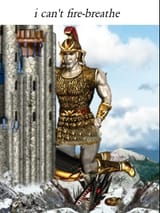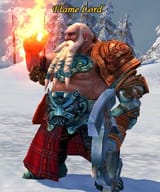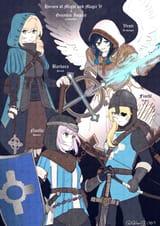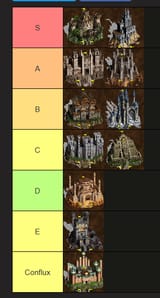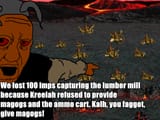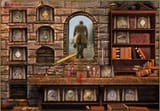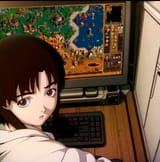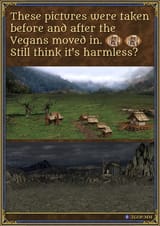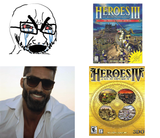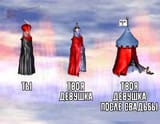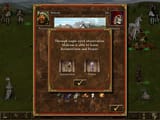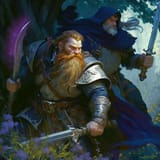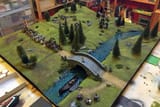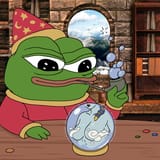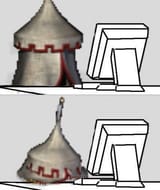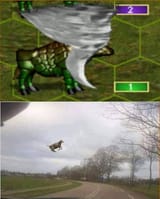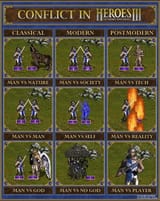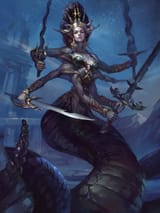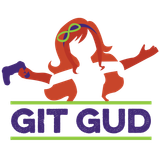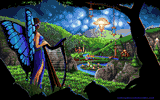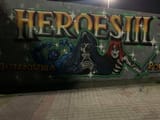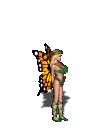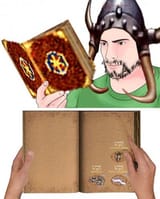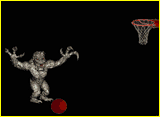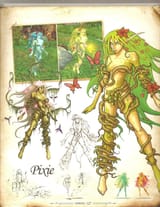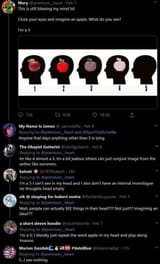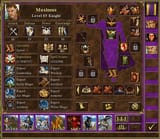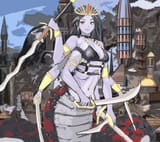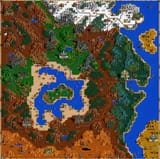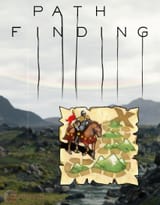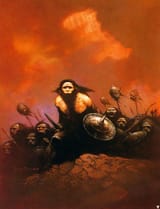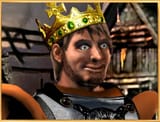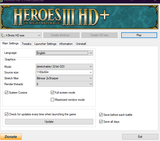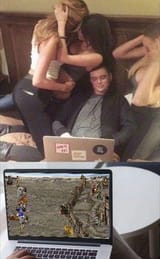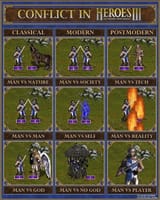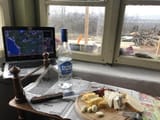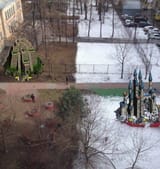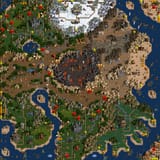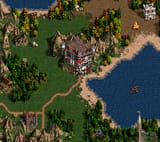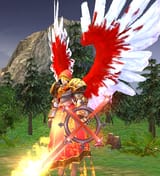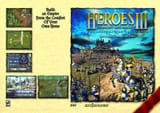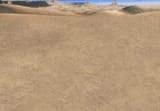>>714422962
1. Adventure map.
1.1. Creatures:
No stacks.
Can have multiple heroes in the same party.
Up to 7 parties can participate in the same battle.
Conflicting alignments might cause a party to rebel (become neutrals that move and do things).
Units can be swimmers, floaters (hover), flyers, tunnellers. Mountains can be crossed by flyers, underground can be dug out by tunnellers.
1.2. Towns:
Income affected by terrain.
Buildings can be destroyed, including by spells. Occupying party can raze a town entirely if it is strong enough.
Populations that are at odds with your kingdom's alignment may even rebel.
Ruins (razed town) can be reanimated into an undead town.
1.3. Spells:
Can alter terrain.
Can permanently (with mana upkeep) summon creatures. Most are usually not obtainable through other means.
Can place permanent (mana upkeep) enchantments on creatures and towns. And even the entire current world they are cast on.
Can damage creatures.
Can resurrect or reanimate creatures.
1.4. Diplomacy:
Actually exists, unlike HoM&M. Somehwat primitive but still. Alignments matter quite a lot.
2. Combat.
2.1. Creatures:
Have movement points that can be spent in discrete quantities.
Remaining number of attacks per round are determined by remaining movement points. Same with retaliations.
Ranged attacks can be completely blocked by obstacles.
Ranged attacks can hit unintended targets.
All attacks have chance to hit.
Lots of varied special abilities, some creatures have more than one. Heroes tend to end up with ten or more.
2.2. Towns:
Instead of only one progressively better defensive structure you get an attacking upgrade, a defensive (anti-magic) upgrade, and an enchantment that is placed on defenders.
2.3. Spells:
All non-global spells can be cast in combat too. Both damage and enchantment.
I think I'm forgetting some differences still.

